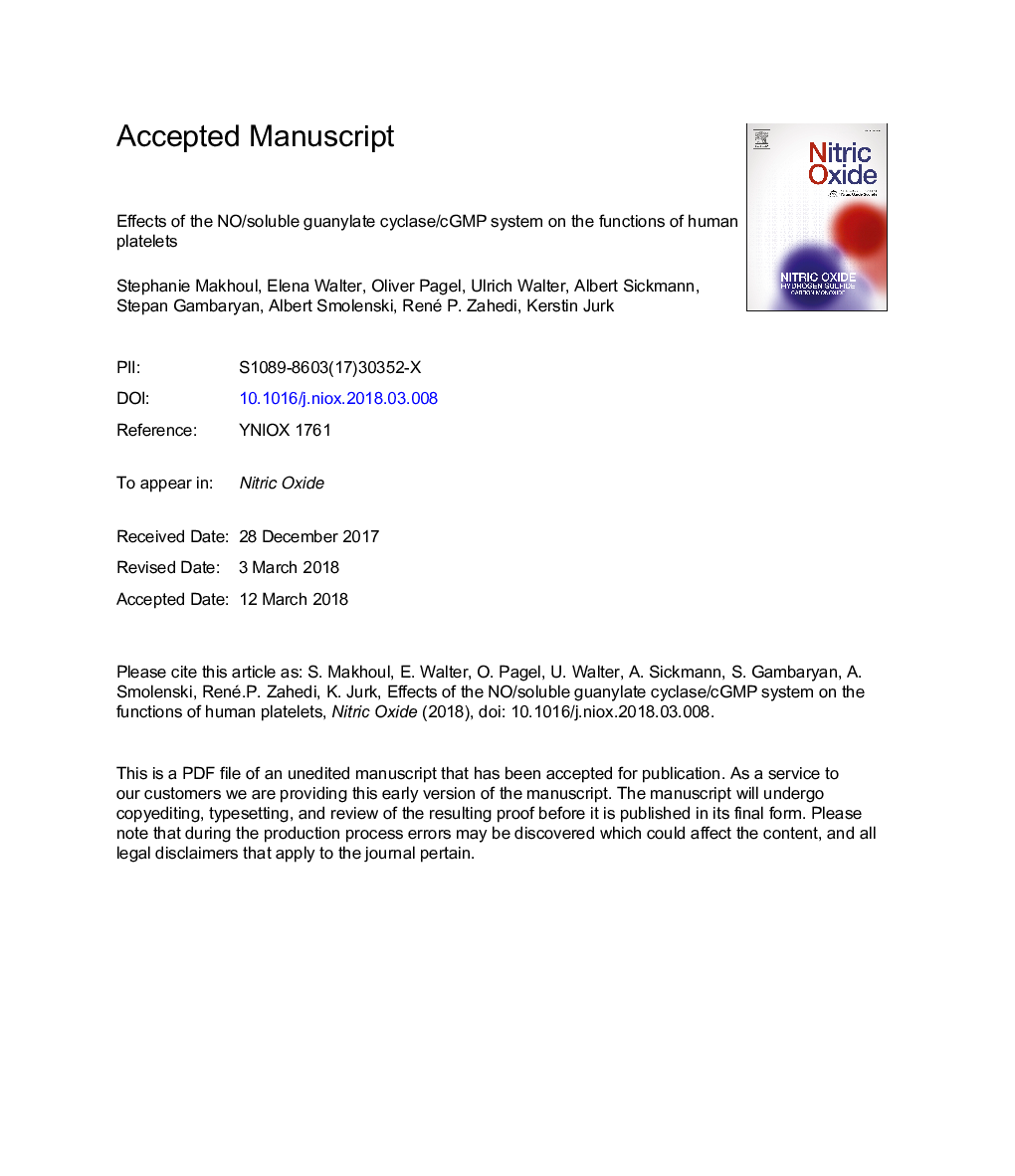| Article ID | Journal | Published Year | Pages | File Type |
|---|---|---|---|---|
| 8344616 | Nitric Oxide | 2018 | 29 Pages |
Abstract
Platelets are circulating sentinels of vascular integrity and are activated, inhibited, or modulated by multiple hormones, vasoactive substances or drugs. Endothelium- or drug-derived NO strongly inhibits platelet activation via activation of the soluble guanylate cyclase (sGC) and cGMP elevation, often in synergy with cAMP-elevation by prostacyclin. However, the molecular mechanisms and diversity of cGMP effects in platelets are poorly understood and sometimes controversial. Recently, we established the quantitative human platelet proteome, the iloprost/prostacyclin/cAMP/protein kinase A (PKA)-regulated phosphoproteome, and the interactions of the ADP- and iloprost/prostacyclin-affected phosphoproteome. We also showed that the sGC stimulator riociguat is in vitro a highly specific inhibitor, via cGMP, of various functions of human platelets. Here, we review the regulatory role of the cGMP/protein kinase G (PKG) system in human platelet function, and our current approaches to establish and analyze the phosphoproteome after selective stimulation of the sGC/cGMP pathway by NO donors and riociguat. Present data indicate an extensive and diverse NO/riociguat/cGMP phosphoproteome, which has to be compared with the cAMP phosphoproteome. In particular, sGC/cGMP-regulated phosphorylation of many membrane proteins, G-proteins and their regulators, signaling molecules, protein kinases, and proteins involved in Ca2+ regulation, suggests that the sGC/cGMP system targets multiple signaling networks rather than a limited number of PKG substrate proteins.
Keywords
Related Topics
Life Sciences
Biochemistry, Genetics and Molecular Biology
Biochemistry
Authors
Stephanie Makhoul, Elena Walter, Oliver Pagel, Ulrich Walter, Albert Sickmann, Stepan Gambaryan, Albert Smolenski, René P. Zahedi, Kerstin Jurk,
